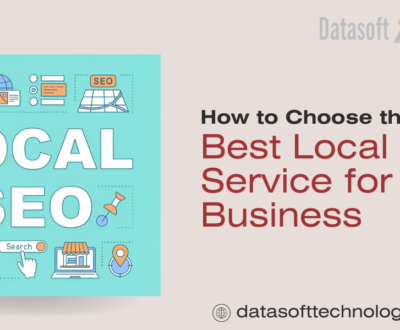How To Optimize Your Website For The Search Engines
- December 20, 2021
- Content Marketing Strategy
Search engine optimization is one of the hottest trends in market websites for boosting their popularity and rankings on the internet. Keywords help to enable websites to attract potential customers. The competition for search engine rankings is very fierce so websites must be aggressive in their marketing efforts. This article can help you to understand the techniques used by many marketers today.
In search engine optimization, a website with many links leading to it from other sites, will receive a big boost to its position on the results page. Search engines give great weight to exterior links that mention search terms when evaluating the relevance of a particular website. Cultivating these links is an effective search engine optimization strategy.
There is no sense in optimizing your site for “hooded sweatshirts” if your target market calls them “hoodies.” You simply must know what words people are actually using, not what you think they use. One invaluable tool in your quest is Google Insights, which will show you, in incredible detail, patterns of Google searches, either globally or by country, stretching back to 2004. Get a solid handle on the words people ACTUALLY use to find what they’re looking for and you can have confidence in the keywords that you choose for SEO.
Track how well your site is doing by analyzing information from analytic tools. Find out which pages are getting the most traffic and which are getting no traffic at all. Find out what brings them to your site. By studying analytics, you are able to adjust your site to one that visitors come to see.
Search engines work very quickly, but they do not like to dig deep down into your directory. So make sure that you are not burying files in your directory. For example: You may have a page located at MyBusiness.net/shop/products/listings/videos/014.html. This is a long, long path. Instead, create a more streamlined directory: shop-listings/014.html.
Set forums and blog comments to automatically insert the nofollow attribute into any links users create. Forum and comment spam are a constant problem, and setting nofollow on discussion pages prevents spammers from harming your own site’s rank by linking to spam sites that sell dodgy products and services.
Avoid unnecessary, miscellaneous data on your website. This strategy goes hand in hand with reducing the length of your page to maximize quality. Miscellaneous data and extraneous facts will only lose the attention of your visitor, which can lose your sale on the spot. Use vital information to your company that explains exactly what you are about.
When you are trying to increase traffic you should avoid any kind of flash. Flash might look good on a website, but it does nothing to increase your search optimization. The problem with this is that you cannot link a single page when using flash so try to stay away from it.
When it comes to content marketing, the AIDA model’s goal is to take a customer on a path that captures their attention, captivates their imagination, keeps their interest, makes them want the product or service, and then prompts them to act. If you can master the process, you should see a significant increase in sales. The most important thing is to finish each stage. If you’re consistently getting to stage 1, 2, or 3 but failing to seal the deal at the last minute, it’s time to rethink your strategy.
The AIDA model is explained in detail.
Many companies utilise content marketing to promote their products and services, improve their brand image, and attract new customers. It’s well known that when done well, content marketing can be extremely beneficial. Content marketing is more than merely cramming key phrases and popular search terms into blogs. It’s all about providing unique material that appeals to and entices the reader.
You can construct a content funnel that takes your potential consumer on a trip if you consider every part of the AIDA model. The first stage is to get the client’s attention. You want to pique someone’s interest and make them want to learn more. The following step is to pique the client’s interest in the product or service you’re offering. You want to use your material to get people thinking about how they might use that service or profit from that product. The next step is to entice the reader to purchase the product or participate in the experience you’re providing. If you’ve made it this far, the next step is to persuade the customer to take action, such as booking that tour, reserving a seat at your restaurant, or finishing the purchase of the item in their shopping cart. You must get from the start to the finish line in order to be successful.

Using AIDA to write copy and content
The AIDA model sounds a lot like the procedure we all go through when we buy something or place an order in its most basic version. Making the campaign relevant and knowing what the client wants are the keys to using AIDA to increase your content creation strategy. You must know how to move from one stepping stone to the next while maintaining eye contact with your reader. Breaking down the model and considering each piece in greater depth can help you build the best strategy.
A stands for “attention.”
This is, without a doubt, the most difficult task. A short Google search will reveal that there is an enormous amount of information available. Consider how you’ll make your content spring off the page and turn heads while you’re putting together a post, an article, or a landing page.
Consider your target audience when creating content. Always keep in mind that you’re catering to a specific set of people, and anything you discuss or distribute should be suited to that group. Conduct some research to learn more about who is reading your articles and what your readers expect from them. Ask questions and don’t start working until you’ve received responses.
Who is your intended audience?
What are the issues that they want to address?
What services does your content piece provide?
What are the most efficient and popular methods of communicating your message?
If you know the answers to these questions, you’ll be in good shape to develop components that get the job done.
Making a strong title that leaves the reader wanting more is one of the finest methods to grab attention.
Be unique, think outside the box, and use a tone that is appropriate for the audience. There are numerous writing styles to choose from, and you should utilize language and vocabulary that the reader will understand.
If you’re selling skateboards to a group of ambitious, enthusiastic teens, your language will probably be considerably different than if you’re offering bespoke legal services to a group of corporate executives. When it comes to reading publications, whether online or in print, it’s common knowledge that individuals have a limited attention span.
The first paragraph should take precedence after the headline. Wait till the last sentence to try to persuade your buyer. If the previous paragraphs are uninteresting and devoid of valuable information, you’ve probably already lost them.
Examine the headlines and key paragraphs first if you’re concerned that your content strategy isn’t functioning as well as you’d intended. These are the areas where you’re most likely to run into problems that restrict your progress.
I=Interest
The next issue is to keep a reader’s attention once you’ve piqued their interest. Persuading them that you have a thorough understanding of the challenges or concerns they confront is one of the most effective ways to accomplish so. As an example, consider the concept of ‘Dr. Google.’ These days, it’s extremely usual for people to use search engines to learn about symptoms and health concerns.
If you’re writing about health, it should be your goal to show that you know what you’re talking about and how it impacts others who suffer from it. You can raise the level of engagement and build a stronger connection by demonstrating that you understand how a given condition makes that reader feel, for example.
You want your reader to believe that this is a work made specifically for them. To show and support your arguments and develop your storey, use research figures, expert analysis, and case studies. Sharing personal experiences can also be beneficial because it reassures the reader and makes them feel more connected to the author.
D stands for desire.
It might be difficult for authors to tell the difference between interest and desire at times. Maintaining interest is essential for reaching the point where the person begins to consider whether or not they genuinely want or desire the goods or service.
There’s a significant difference between reading something and thinking the product the company is pushing is a nice concept and browsing an article and determining this is something you really require in your life.
If you’re selling software, for example, you need to get the consumer from the point where they think the product sounds great to the point where they actually want it and are willing to place an order.
A stands for action.
This is the jigsaw’s final piece. The action phase is all about pushing the reader over the brink and converting their curiosity and desire into actionable outcomes. A consumer placing a purchase or a buyer shaking hands on a contract might be the concluding phase of a news release for a new skincare brand, for example.
A call to action should be included in every piece of content you write or publish, stating your intentions and directing the reader in the appropriate way. Make it easy for the audience to take that final step, such as by having a buy button, and try to anticipate obstacles that might hinder the reader from doing so.
Provide a link to your privacy policy if there are worries about privacy and data security when shopping online, for example.
If individuals are concerned that they will not like the product, provide a money-back guarantee or a detailed description of the return policy. Reassurance is a good way to tip the scales in your favour at this point.
CTR-increasing ad copy tactics
It pays to use AIDA theories to your ad copy if you’re trying to raise your CTR. Create catchy headlines that stand out, keep your target audience in mind, and back up your statements with figures and statistics. Use content to elicit emotional responses and establish the tone of the article right away. Use keywords in a natural way, avoid hard sell tactics, and generate unique URLs with relevant concepts and words. Focus on giving the reader useful information and encouraging them to consider how this advertisement pertains to them. There’s no use in waxing lyrical about how great your company is if you don’t mention how it can help customers. Instead of bombarding the buyer with hundreds of words about your company’s history or achievements, you want to utilise your words to persuade them that they want or need whatever you’re offering in their lives. Always make sure that your copy addresses the issue that your ad is addressing. For example, if someone wants to sell their car, they might type the phrases “sell a car” into a search engine. Use the strapline and description of your ad to persuade your client that you can assist them in selling their car. You could include a line about buying the car even if the client doesn’t buy their next car from the same dealer, you could provide details about cash offers, or you could highlight the speed of the process, for example, ‘we’ll pay you on the same day.’
Using the AIDA model to improve the performance of your landing pages
Linking to landing pages is crucial for generating leads and increasing sales. Landing pages link you directly from a search engine to a page that is relevant to your search. The procedure should be simple and straightforward. If you’ve been successful in increasing traffic to your landing pages, the last thing you want is for clients to lose interest and go elsewhere because the page doesn’t meet their expectations. Your landing pages should draw the customer’s attention to certain services or products, provide relevant information, and, most importantly, persuade them to act.
The AIDA model should be used to structure your landing pages. Use headlines and opening statements to grab the attention of the reader, peak their interest by telling them more and backing up your claims and then use images, clips and persuasive language to make them want it. Make sure there is a call to action, and that the page makes it as easy as possible for the reader to take that step. Matching the call to action to the headline is always a good idea, as is attempting to anticipate concerns and providing answers. Any business website would benefit from FAQ pages and live chat options.
Try to avoid stuffing pages full of text, as this can be very off-putting. Use images, videos and infographics to break up paragraphs, and be succinct and concise. Be punchy and get to the point.
Are you keen to embrace the power of content marketing to push your business forward? If you’re using paid adverts, you’re sharing content on social media, or you’re hoping to improve your search engine ranking or create more leads using landing pages, adopting the AIDA model could make all the difference. Hopefully, this guide has given you an insight into the theory and provided you with useful tips to create a compelling, captivating and effective content marketing campaign.
About us and this blog
We are a digital marketing company with a focus on helping our customers achieve great results across several key areas.
Request a free quote
We offer professional SEO services that help websites increase their organic search score drastically in order to compete for the highest rankings even when it comes to highly competitive keywords.
Subscribe to our newsletter!
More from our blog
See all postsRecent Posts
- The Impact of AI on Digital Marketing: Key Insights July 26, 2024
- Guide to Measuring ROI of SEO for Business Success in Canada July 15, 2024
- All About UX Signals and How They Impact Your Google Rankings July 11, 2024










